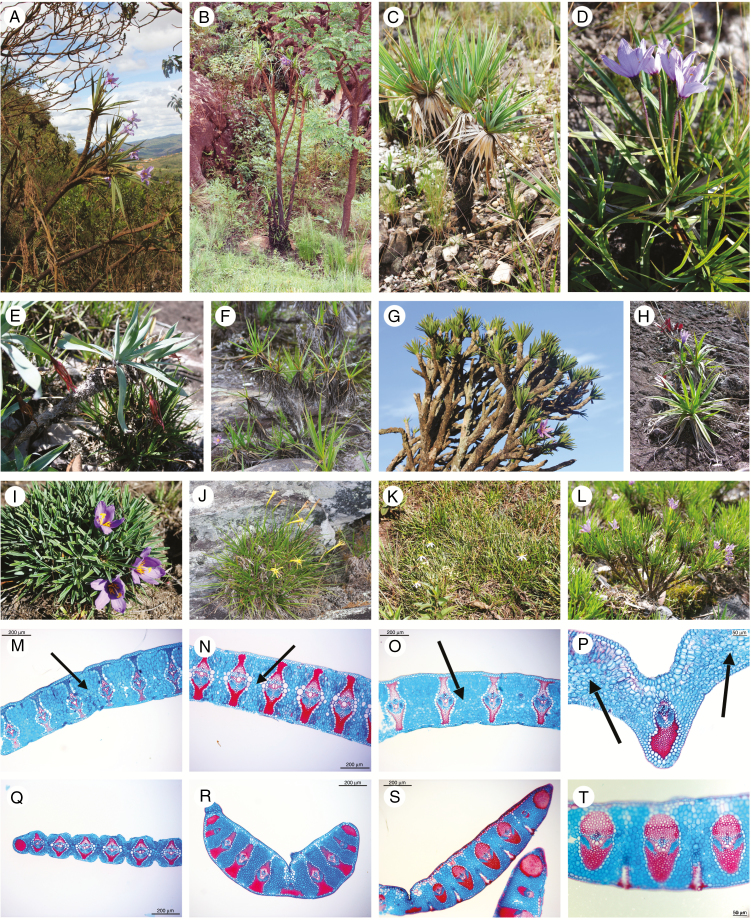Fig. 1.
Examples of the species and the functional traits analysed. (A–L) Velloziaceae species displaying absence (D, H, I, J and K) or presence (A, B, C, E, F, G and L) of conspicuous aerial stems. (M–T) Anatomical sections of the leaves, showing presence (M, N, O, P) or absence (Q, R, S, T) of the aquiferous parenchyma between the bundles on the leaves (indicated by arrows). Scale bars: 200 µm in M–O and Q–S; 50 µm in P and T. Blue colour indicates tissues with primary cell walls (parenchyma and phloem), red/magenta color indicates tissues with secondary cell walls (fiber and xylem). (A) Vellozia aloifolia Mart. (B) Vellozia glabra J.C.Mikan. (C) Vellozia variabilis Mart. ex Schult. & Schult.f. (D) Vellozia caruncularis Mart. ex Seub. (E) Barbacenia spiralis L.B.Sm. & Ayensu. (F) Vellozia fruticosa L.B.Sm. (G) Vellozia compacta Mart. ex Schult. & Schult.f. (H, M) Barbacenia celiae Maguire. (I) Vellozia cryptanta Seub. (J, Q) Barbacenia riedeliana Goethart & Henrard. (K, S, T) Vellozia gramineae Pohl. (L, R) Vellozia semirii. (N) Barbacenia involucrata L.B.Sm. (O, P) Barbacenia glabra Goethart & Henrard. Credits: A–D, F, G, J–L: S. Alcantara; E, I: R. Mello-Silva; H: J. G. Rando; M–T: K. Drequeceler.

